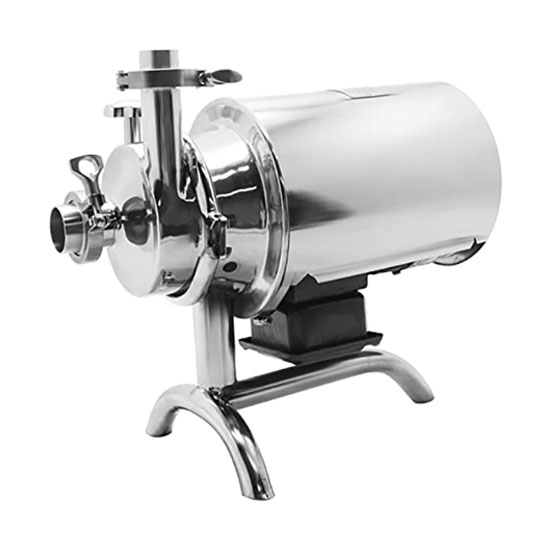How Does a Stainless Steel Centrifugal Pump Work?
ATO stainless steel centrifugal pumps are widely used in the production and processing of chemical companies because of their wide range of performance applications, small size, simple structure, ease to use, balanced flow, durability, and low purchase and operating costs.
Stainless Steel Centrifugal Pump Working Principle
Stainless steel centrifugal pump is a type of ATO centrifugal pump. It consists of centrifugal force, which is created by the high-speed rotation of a centrifugal impeller to extract liquids or other materials. In addition to industrial production applications, stainless steel centrifugal pumps are also widely used in agricultural irrigation, municipal engineering water supply, power plant circulating system water supply, urban pollution treatment, etc.
The stainless steel centrifugal pump consists of a high-speed rotating centrifugal impeller and a fixed snail-shaped pump casing. An impeller with several (usually 4 to 12) rear curved blades is fixed on the pump shaft and is driven by an electric motor to rotate together with the pump shaft at high speed. When the stainless steel centrifugal pump starts, the pump shaft pulls the centrifugal impeller block to rotate at high speed, thereby driving the rotation of the liquid pre-filled between the blades.

Under the action of inertial centrifugal force, the liquid moves radially from the center of the centrifugal impeller to the outer periphery. It should be emphasized that if the pump casing is not filled with the liquid being conveyed before the stainless steel centrifugal pump is started, the air density is low, the centrifugal force caused by the rotation of the centrifugal impeller is small, and the core area of the centrifugal impeller is not enough to generate in the storage tank. suction.
The pressure of the liquid inside is low, so even if the stainless steel centrifugal pump is activated, the liquid cannot be transferred. This shows that the stainless steel centrifugal pump has no self-priming ability, which is called air binding. Kinetic energy is obtained during the entire process of the liquid flowing through the centrifugal impeller, the static pressure energy increases, and the flow rate becomes larger. When the liquid leaves the impeller and enters the pump casing, part of the kinetic energy is converted into static pressure energy due to the slow expansion and deceleration movement of the flow passage in the casing, and then flows tangentially into the discharge pipe.
Therefore, the stainless steel centrifugal pump housing condenses not only the structure of the liquid discharged by the impeller but also the energy transfer device. When the liquid is thrown from the center of the centrifugal impeller to the periphery, a low-pressure area is created in the center of the centrifugal impeller. Due to the difference between the liquid level in the tank and the total potential energy at the center of the centrifugal impeller, the liquid is drawn into the center of the centrifugal impeller. With the continuous operation of the impeller, the liquid is continuously sucked and discharged. The mechanical kinetic energy obtained by the liquid in the stainless steel centrifugal pump is then manifested as an increase in static pressure energy.

